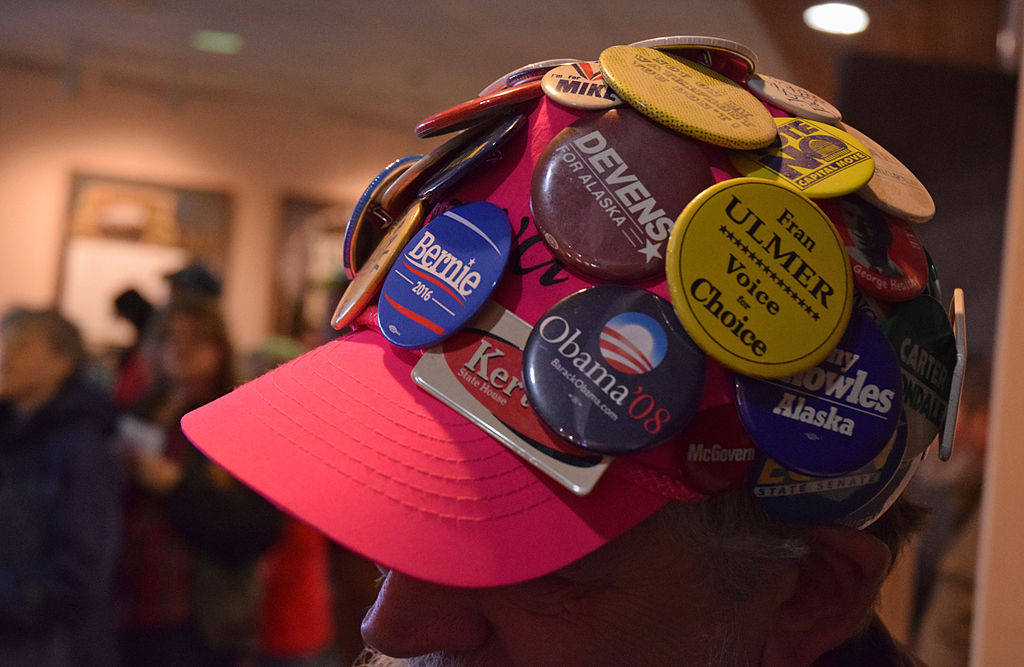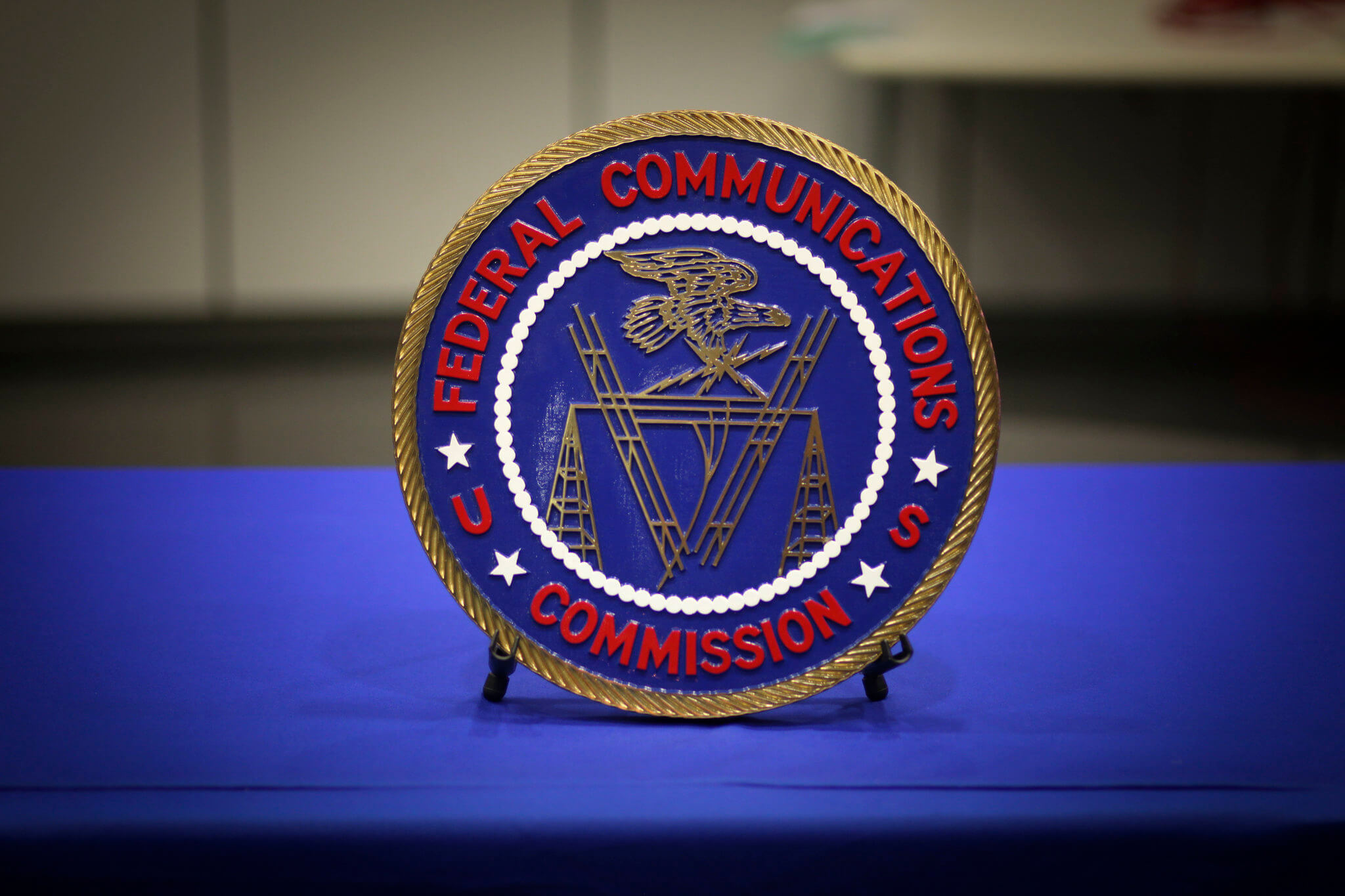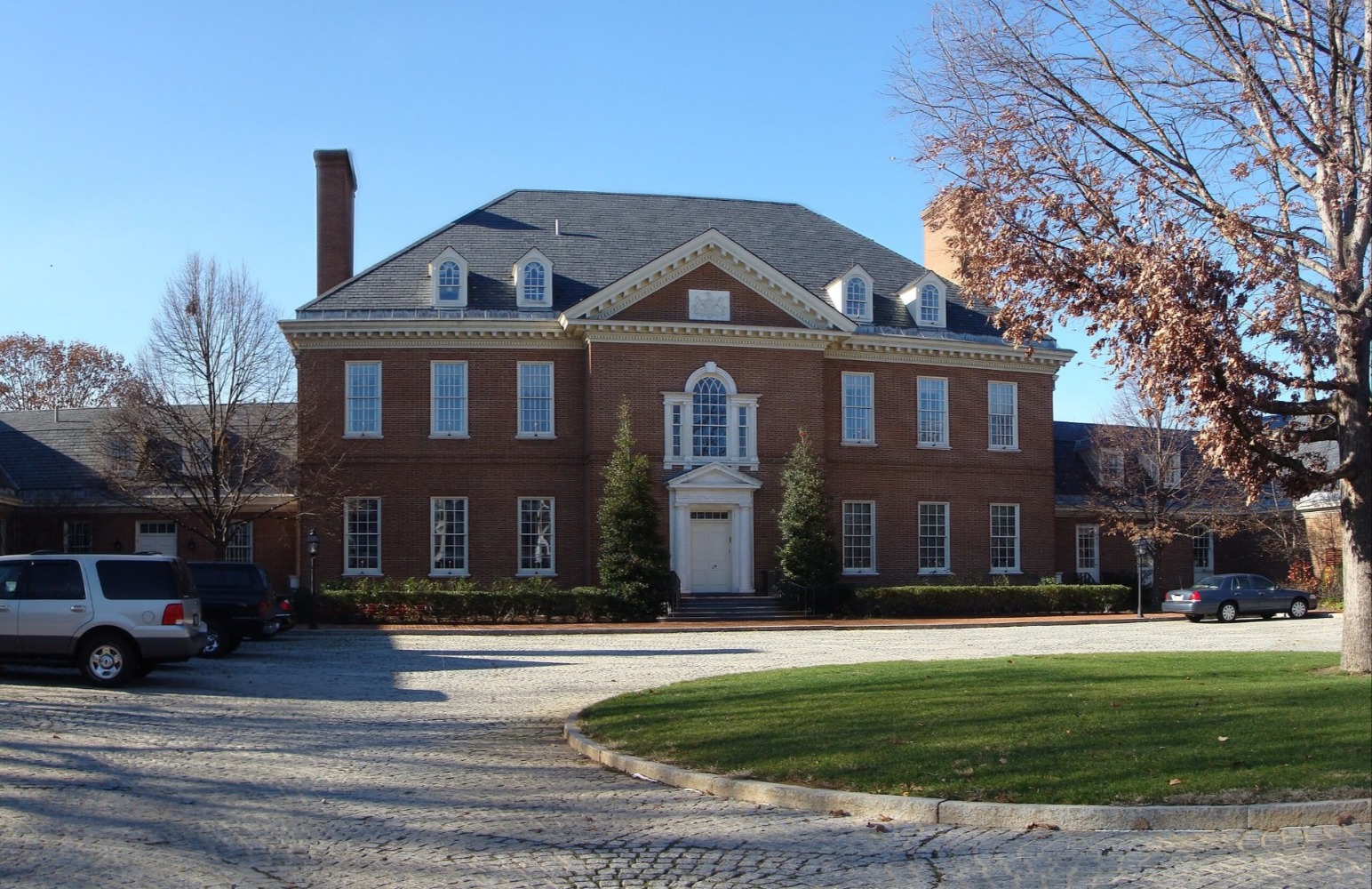Is the Deep State Donating to the Democrats?
The intelligence bureaucracy still looks remarkably apolitical.

Published by The Lawfare Institute
in Cooperation With

It’s Election Day, the day that—if you believe President Trump’s political rhetoric—the nefarious coup plotters of the Deep State will finally get their comeuppance from the American people.
Trump has spent the better part of his four years in office attacking the intelligence community. He has cast doubt on intelligence findings about Russian election interference. He has suggested repeatedly that members of the intelligence world have treasonously conspired against him. He has ignored intelligence in making policy. He has fired intelligence community leadership. And he has disclosed sensitive intelligence matters both domestically and abroad.
The bipartisan intelligence community leadership, meanwhile, has struck back. Numerous former intelligence officials have spoken up against the president and defended their institutions. There have been letters. There have been op-eds and statements. The national security community, more than any other single policy community, has in a cross-ideological fashion rejected Trump.
In the face of this sustained political confrontation, you might expect that the Deep State itself—the rank-and-file intelligence community bureaucrats against whom Trump so often rails—would do what so many other Americans who oppose Trump are doing: giving money to his opponents. We certainly imagined that. And we set out to document what we expected would be a significant uptick in intelligence community support for Democrats.
We didn’t find it.
Despite the president’s rhetoric—not to mention his rejection of intelligence reporting and his attacks on key intelligence community institutions, his removal of admired leaders and installation of underqualified loyalists—members of the bureaucracy have not, by and large, exercised their right to make political contributions to his opponents. Either they have remained stubbornly apolitical, at least according to the metrics by which political scientists normally measure political engagement, or their contributions are invisible because of a raft of factors that tend to obscure them. If the intelligence community bureaucrats are supporting Joe Biden or other Democratic candidates, their tradecraft to keep it secret has been impeccable.
There is no easy way to measure the political sentiments of intelligence professionals, or government bureaucrats more generally. These things aren’t polled. While the Washington, D.C., area is certainly a Democratic stronghold on both sides of the Potomac River, the politics of the region generally masks significant pockets of conservatism—and, in any event, the intelligence community is not all local to the D.C. area. Moreover, the national security community has not traditionally been a Democratic constituency, and some parts of it are traditionally conservative-leaning. So in assessing whether the intelligence community has shifted Democratic in response to Trump, there’s a problem both of establishing a baseline and of how to measure change.
Our approach to this problem is admittedly an imperfect one: We analyzed Federal Election Commission (FEC) filings from the past four presidential cycles, from 2007 to the present. When people make political contributions, they are obliged to report their employers, and the recipient political committee is obliged to report each contribution—including the employer’s name—to the FEC. So we searched the data for individuals who identified themselves as employees of three of the most prominent intelligence agencies: the FBI, the CIA and the ODNI. We filtered the database using the terms “FBI” and “Federal Bureau of Investigation,” “CIA” and “Central Intelligence Agency,” and “ODNI” and “Office of the Director of National Intelligence.” The ODNI includes three national centers, so we also searched for them: “National Counterproliferation Center” and “NCPC,” “National Counterintelligence and Security Center” and “NCSC,” and “National Counterterrorism Center” and “NCTC.” We cleaned and sorted the data, removed false positives, and tallied the contributors.
In a nutshell, since the 2016 election, there has been a marked uptick in political giving of $200 or more to political committees by FBI, CIA and ODNI employees. And this activity has, in general, benefited Democratic-affiliated committees modestly more than it has Republican-affiliated committees. Yet relative to the size of the agencies as a whole, the level of political giving remains trivial. This suggests that the bureaucracy has remained relatively nonpartisan in a deeply partisan time. We analyze each agency below, starting with the FBI, proceeding to the CIA and concluding with the ODNI.
Before diving in, a few methodological notes and caveats. First and foremost, the 2020 data run only from Jan. 1, 2020, to July 31, 2020. This is the latest data available as of Sept. 25, when the data was downloaded for cleaning and analysis.
Second, searching FEC data with the term “CIA” produced thousands of potentially false-positive results—mostly because the initials CIA stands for a great many things other than the spy agency (a lot of people from the “Culinary Institute of America” make political contributions, for example). To address this as efficiently as possible, we categorically excluded hits from individuals located outside the D.C., Maryland and Virginia areas who described their employer as “CIA.” We did, however, include individuals from all states who identified as employees of the “Central Intelligence Agency.”
Third, as with all political contributions, if an FBI, CIA or ODNI official made a contribution or a number of contributions that totaled less than $200 in a one-year period, it does not appear in the FEC database and thus is not accounted for in our analysis.
Fourth, all reporting of political giving by intelligence community officials will tend to understate the community’s degree of political engagement. The reason is that some intelligence community officials mask their contributions using a variety of available (legal) techniques. Some, for example, allow their spouses to make political contributions on behalf of the household precisely to avoid having their names and employers splashed on FEC reports. This has been true for a long time, and we assume it is no more or less true today than it has been in the past. What’s more, not all intelligence community personnel can do this; single people, for example, are their own households, and members of politically-divided marriages aren’t necessarily represented by their spouse’s political contributions.
Contributions by intelligence community officials can be masked in other ways too. For one thing, most government employees aren’t rich, and contributions totaling less than $200 are not reported—so a large degree of engagement at a comparatively low level could be taking place without showing up in the FEC reports.
What’s more, some employees may leave the names of their agencies out of the reporting, describing themselves simply as working for the U.S. government or even reporting the name of their cover agencies. This would be a particularly significant factor at the CIA.
In other words, all of the numbers we are reporting for all election cycles should probably best be understood as reflecting some indeterminate percentage of political giving from that agency but not the totality of it. Our working assumption, however, has been that the factors that induce underreporting are more or less constant, so a big change in behavior would likely be visible in the FEC reporting.
FBI
From 2007 to 2016, the number of FBI officials who donated to political committees followed a reasonably predictable pattern. It spiked in the presidential election years (with 80 contributors in 2008, 93 in 2012 and 83 in 2016) and plummeted each year after (only 21 contributors in 2009 and 18 in 2013). Then the number of contributors increased slowly—if at all—for the next two years, until spiking again in the next presidential election year.
From 2008 to 2010, more FBI contributors donated to Republican committees than to Democratic committees. About 65 percent of contributors donated to Republican committees during this time, demonstrating a strong, but not overwhelming, preference. Then, from 2011 to 2016, Democratic contributors outpaced Republican contributors. Again, the partisan preference was strong, but not overwhelming: About 60 percent of contributors donated to Democrats during this period.
From 2017 to 2020, the number of contributors and the degree of partisanship increased. In 2017, 36 FBI officials made political contributions. That number is considerably higher than the number of contributions made in other years immediately following a presidential election—compare that with only 21 contributors in 2009 and 18 contributors in 2013. Twenty-six contributors, or 72 percent, donated to Democratic committees. And yet, by a slim margin, FBI officials still gave more money to Republican committees than to Democratic committees: $6,093 was donated to Republicans, compared to $5,373 to Democrats. Republican contributors may have been fewer in number, but they made bigger donations overall.
In 2018, 57 officials made political contributions. A strong majority of those contributors (46, or 81 percent) supported Democratic committees. By a slim margin, FBI officials that year gave more money to Democratic committees than to Republican committees ($7,442 compared to $7,159).
In 2019, 141 officials made political contributions—a record high number for a non-election year. Ninety-one contributors, or 65 percent, gave to Democratic committees. And yet, FBI officials again gave slightly more money to Republican committees than to Democratic committees ($9,171 to $7,825).
As of July 31, 189 officials have made political contributions in 2020—the highest number on record. This uptick in contributors did not favor either political party, but the dollar value of donations strongly favored Republican committees. Fifty-two percent, or 92 contributors, donated to Democratic committees, but FBI officials’ donations to Republican committees totaled $21,909, dwarfing FBI officials’ donations to Democratic committees, which came in at $12,247.
A few notes on this data, which frankly surprised us. The first point is how small the numbers are—the number of dollars and the number of donors alike. The FBI employs approximately 35,000 individuals. In 2019 and 2020, the numbers of officials reported as making political contributions represent just 0.4 and 0.54 percent of employees at the bureau, respectively. For comparison, an analysis by the Center for Responsive Politics sets the national contribution rate at 1.11 percent for this period.
This data frankly surprised us. The bureau workforce does not appear to have aligned itself with either political party. Yes, the number of donors has grown, and the number of Democratic donors has outpaced the number of Republican donors. But the dollar value of Republican donations continues to outpace Democratic contributions. So it’s kind of a wash. If the FBI workforce has shifted to the left, it’s not reflected in the visible political giving of the employee base.
CIA
From 2007 to 2016, the number of CIA officials who donated to political committees spiked in the presidential election years, with 36 contributors in 2008, 37 in 2012 and 26 in 2016. Contributors plummeted the year after, with 11 in 2009 and 8 in 2013. This broadly resembles the pattern observed with respect to FBI contributors.
In 2007, 2008 and 2010, the number of CIA officials who donated to Democratic committees outpaced the number who donated to Republican committees. Six Democratic contributors in 2007 made up 75 percent of the agency’s total contributors, 20 Democratic contributors in 2008 made up 56 percent of the total, and four Democratic contributors in 2010 made up 57 percent of the total. Conversely, in 2009 the number of Republican contributors outpaced the number of Democratic contributors, with six Republican contributors making up 55 percent of the total. From 2011 to 2012, the number of Republican contributors outpaced the number of Democratic contributors. The five Republican contributors in 2011 constituted 83 percent of the total, while 19 Republican contributors in 2012 were 51 percent of the total. Then from 2013 to 2016, the number of Democratic contributors once again outpaced the number of Republican contributors. In 2013, five Democratic contributors constituted 63 percent of the total; in 2014, seven Democratic contributors made up 54 percent of the total; and six contributors in 2015 made up 67 percent of the total.
The partisan preferences of CIA officials varied during this period, but the margin between contributions to Democratic and Republican committees was reasonably narrow. In the 2008 presidential election, for example, a narrow majority (56 percent) of contributors supported Democratic committees. Then, in 2012, a narrow majority (51 percent) of contributors supported Republican committees. Strong partisan preference became apparent only in years with a small number of contributors. In 2007, for example, 75 percent of contributors donated to Democratic committees, but there were only eight contributors total. Similarly, in 2011, 83 percent of contributors supported Republicans, but only six people contributed.
In 2016, just 26 officials made political contributions—a small number compared to other election years. (In 2008, 36 officials made contributions; and in 2012, 35 made contributions.) Eighteen of those officials (or 69 percent) favored Democrats. In 2017, the total number of contributors dropped to 13, nine of whom—or 69 percent—favored Democrats.
In 2018 and 2019, the number of contributors increased, as did support for Democratic committees. Nineteen people contributed in 2018, most of whom (12 contributors, or 63 percent) donated to Democratic committees. Officials donated more money to Democrats than to Republicans ($3,167 compared to $2,880). In 2019, 32 CIA officials made political contributions, and a strong majority of them (22 officials, or 69 percent) favored Democrats. The dollar value of contributions also favored Democrats ($4,263 to $2,895).
In 2020, CIA officials have contributed more to Democratic committees both in terms of number and dollar value of contributions. Forty-four CIA officials made political contributions—the highest number in the dataset—of which 23 (52 percent) supported Democratic committees. Most dollars donated went to Democratic committees: $7,147 compared to $6,959.
Once again, however, it’s important to note that the numbers here are probably very small. The official number of CIA employees is classified, but a leaked copy of the 2013 intelligence budget provides some clue, stating that the Central Intelligence Agency Program (CIAP) employs 21,426 individuals. In 2019 and 2020, that would mean that, respectively, just 0.14 and 0.18 percent of the individuals employed by the CIA made political contributions. The rate of contribution per employee is even lower than that of the FBI.
ODNI
The number of ODNI officials who contribute to political committees is even smaller. This may partly reflect the fact that the office comprises, to a significant degree, employees detailed from other agencies—so if people are contributing, they may be identifying themselves as employed by their home agencies. The year 2020 saw the greatest number of contributors, and that was just 13 (compared to 44 CIA contributors and 189 FBI contributors).
From 2007 to 2018, the number of ODNI officials making political contributions spiked in presidential election years and plummeted right after. The overwhelming majority of contributors donated to Democratic committees during this period, and the total of donated dollars favored Democrats as well. In 2008, 2012 and 2016, only six ODNI officials made political contributions, and the overwhelming majority (83 percent or more) of these contributors donated to Democratic committees. ODNI officials did not make a single donation in 2007, 2009, 2011, 2014 and 2015.
The preference of ODNI officials for Democratic committees persisted in 2019 and 2020. In 2019, the number of contributors spiked to eight—a record high for a non-election year. Seven contributors, or 88 percent, supported Democratic committees, as did most donated dollars: $1,546 or 97 percent went to Democrats. In 2020, 13 ODNI officials made contributions to political committees, the greatest number in the ODNI dataset. Once again, most contributors (11, or 85 percent) supported Democratic committees, as did most ($2,697 or 95 percent) of the donated dollars.
The Office of the Director of National Intelligence employs about 2,000 individuals. This means that when the number of political contributions was at its highest in 2019 and 2020, 0.40 and 0.65 percent of ODNI officials made political contributions. This contribution rate is greater than that of CIA officials and is roughly on par with that of FBI officials. The rate of participation among ODNI officials is still far below the national average for this same period (1.11 percent).
Conclusion
Put simply, at least as measured in reported political contributions by identified employees of the ODNI, CIA and FBI, there is no evidence that the past few years have seen a major politicization of the bureaucracy on behalf of Democrats. The remarkable thing, rather, is just how low the rates of political giving by employees of these agencies remains.
Our working hypothesis when we began this research was that Trump had politicized the bureaucracy against him and that large numbers of previously nonpolitical career officials were now giving to Democrats in defense against the attack on traditional norms of behavior toward the community. The data, however, do not support this hypothesis.
One possibility is that the hypothesis is still correct. In this scenario, large numbers of intelligence community employees are giving small (less than $200) donations in their own names, or they’re making larger donations and listing their employers in vague terms. In addition, married employees are giving through their spouses and detailees are listing their home agencies, so a rather large upswing in giving is invisible in the data.
The other possible explanation is that the norm of apolitical behavior among the intelligence bureaucracy is extremely strong and has not changed much in the face of significant antagonism from the president and the Republican Party. Being politically active is not especially smiled upon, and despite the provocations from the president, people may fear disapproval of colleagues or agency leadership.
Our own guess is that a mix of factors is probably at work here. That is, some degree of blue shift inside the community may well be real and masked, but the apolitical expectations are no doubt very strong as well. In any event, if the Deep State coup plotters are secretly funding the Democratic Party, they are doing a very good job keeping it secret.






